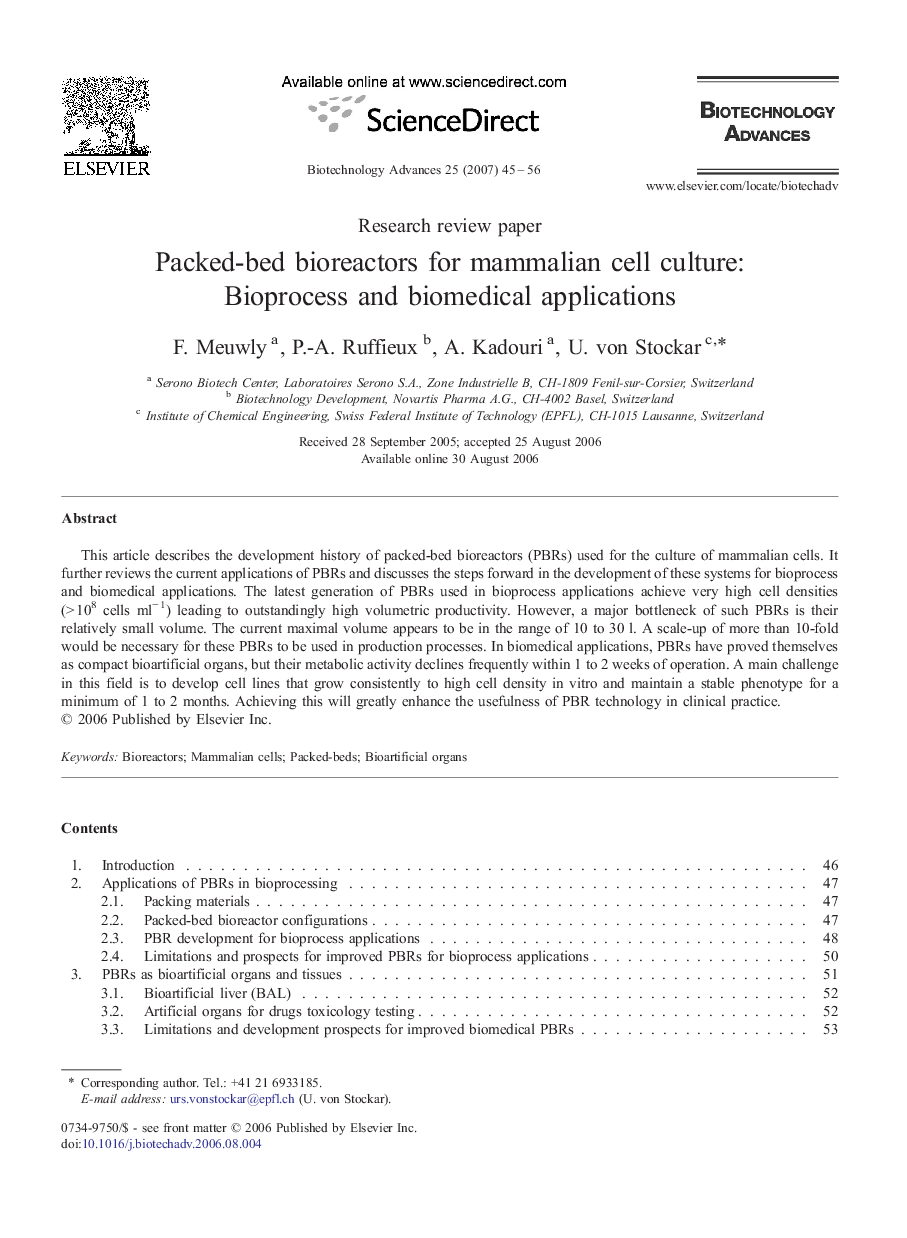| Article ID | Journal | Published Year | Pages | File Type |
|---|---|---|---|---|
| 14845 | Biotechnology Advances | 2007 | 12 Pages |
This article describes the development history of packed-bed bioreactors (PBRs) used for the culture of mammalian cells. It further reviews the current applications of PBRs and discusses the steps forward in the development of these systems for bioprocess and biomedical applications. The latest generation of PBRs used in bioprocess applications achieve very high cell densities (> 108 cells ml− 1) leading to outstandingly high volumetric productivity. However, a major bottleneck of such PBRs is their relatively small volume. The current maximal volume appears to be in the range of 10 to 30 l. A scale-up of more than 10-fold would be necessary for these PBRs to be used in production processes. In biomedical applications, PBRs have proved themselves as compact bioartificial organs, but their metabolic activity declines frequently within 1 to 2 weeks of operation. A main challenge in this field is to develop cell lines that grow consistently to high cell density in vitro and maintain a stable phenotype for a minimum of 1 to 2 months. Achieving this will greatly enhance the usefulness of PBR technology in clinical practice.
